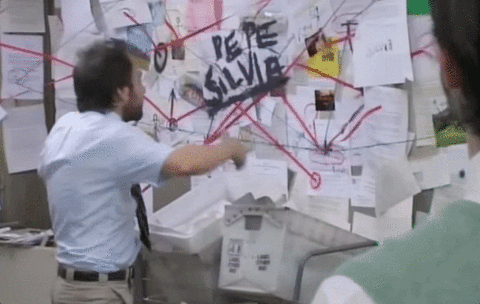It's time to treat the platforms like media companies
Hello, happy Monday! Welcome to the Media Nut, a little slice of the internet to talk about all things media. I’m not quite sure what happened, but over the weekend, this little two-week-old newsletter jumped from 700 subscribers to 1,111. Thank you all for kicking the tires. While I don’t expect anyone to ever read, I am grateful for you even taking the chance.

When I was at NBC, working on the branded content side, I heard a tale, most likely apocryphal, meant to highlight how serious the company took the content of the ads that run on its network.
The story goes like this: there was an advertiser many years ago who wanted to run a commercial during The Today Show, and use the area outside of 30 Rockefeller Plaza as the shooting location. After getting all the necessary permits to shoot, the company made its spot, finally handing over the tape to the network’s legal and standards team for review.
Every TV network has a group of lawyers that review ads to make sure they don’t violate any FTC regulations, but also to make sure that the ads running don’t confuse its viewers. The latter part can be highly subjective. As the story went, the commercial began with a sweeping overhead shot of Rockefeller Plaza, landing right outside where The Today Show aired.
And the first line of the spot went something like, “Today, we are pleased to introduce...”
Legal told the advertiser they needed to cut out the word “Today” because they didn’t want viewers to think that The Today Show was endorsing this brand otherwise they’d spike the spot. A single word matched up with an iconic landscape was a bridge too far for the lawyers.
I love this story because it presents the media company in the most positive of lights, arguing on behalf of its viewer (again, I am not sure this is a true story, but one that was told to me). But it also shows the power of regulation. Even if the arguments for editing the commercial were subjective, the invisible hand of regulation pushes the lawyers towards the most conservative approach.
In a 1997 speech, then-FTC commissioner Mary Azcuenaga said:
“Advertising claims offer to provide to the consumer a product that will perform as advertised. The FTC Act requires not only that advertising claims be truthful, but also, that they not mislead reasonable consumers about material and objective aspects of the product or service to which they relate. As the Commission's Policy Statement on Deception states: ‘[T]he Commission will find deception if there is a representation, omission or practice that is likely to mislead the consumer acting reasonably in the circumstances, to the consumer's detriment.’"
In the social media age, where platforms like Facebook and YouTube earn billions of dollars in ad revenue (FB, $17.4 billion in Q1; YouTube, $15 billion in 201), the notion of “misleading reasonable consumers about material” takes on a whole new perspective. Anyone can post anything and then put money behind the post, no matter the quality or veracity, to amplify it. And then the algorithms kick in and we get the Wayne’s World effect.

The networking effect is real and, as the last few years have shown, can be dangerous.
Take Plandemic, the most recent example of a conspiracy theory that spread like wildfire last week.
Plandemic, a video from Judy Mikovitz, a discredited scientist, about a litany of conspiracies and dangerous advice, started making the rounds at the beginning of April. And by the first week of May, had taken the social networks by storm. In a Medium post, multimedia designer Erin Gallagher, showed how the video went viral using data from CrowdTangle.

(Image via Erin Gallagher)
“The video spread from YouTube to Facebook thanks to highly active QAnon and conspiracy-related Facebook groups with tens of thousands of members which caused a massive cascade. Both platforms were instrumental in spreading viral medical misinformation.”

(Image via Erin Gallagher)
Talking to NBC News last Monday, as the video got passed along like a chain letter from the mid-1990s, Stanford disinformation researcher Renee DiResta noted how the professional look of the video helped it spread:
“One of the real issues with getting authoritative information today is that what's surfaced is essentially determined by whoever runs the best marketing campaign.”
As NBC News noted in a piece later in the week about how doctors are getting a bit tired of the conspiracies that have jumped from the online world to emergency rooms,
“The structural factors in this case include Facebook, YouTube and Twitter, which have struggled to contain the spread of misinformation, some of it coming from positions of authority.
Social networks have taken a variety of steps in recent weeks to thwart misinformation, such as providing dedicated portals for vetted information from public health officials and banning content related to conspiracy theories around 5G wireless technology.”
The New York Times reported on Friday that:
“YouTube and Facebook have removed the “Plandemic” scene, saying that it spread inaccurate information about Covid-19 that could be harmful to the public. But the video continues to circulate, as people post new copies. Twitter added an “unsafe” warning on at least one link featuring Dr. Mikovits on the social network, and blocked the hashtags #PlagueOfCorruption and #Plandemicmovie from trends and search.”
The digital game of Whack-A-Mole takes on different proportions when public safety is at risk.
YouTube, which once called me to tell me that a story a reporter was working on about the spread of disinformation wasn’t really a story, continually runs ads from conspiracy organizations like The Epoch Times, which itself has been an epicenter of spreading coronavirus conspiracies:
Tech journalist Joshua Topolsky took to Twitter on Sunday to show YouTube that, after searching for a video about physical therapy, he got served a 2-minute Epoch Times ad:


For years, the platforms have taken the position they are not media companies and that they cannot police what people say. But at a time where conspiracies get planted on social networks and bloom all the way up to the President of the United States (check out last night’s 60 Minutes segment that shows how a conspiracy races around the world faster than the truth can put its pants on, and the real-world effects it has) it’s time to treat the tech platforms like the media companies they are.
Prince, “Dreamer”
Thank you, again, for allowing me in your inbox. If you have tips or thoughts on this newsletter, drop me a line. See you tomorrow!
Some interesting links:
Virginia Beach man finds a receipt for the sale of four slaves in 1858. He now wants to find their descendants. (The Virginian-Pilot)
We are living in a failed state. (The Atlantic)
Big tech has crushed the news business. That’s about to change. (New York Times)
With Upfronts Week canceled, here’s what presenters are—and aren’t—doing instead. (Adweek)
CPG brands continue to invest heavily into the DTC world. (Adexchanger)
Six-months in, Facebook News remains a question mark to publishers (Digiday)



